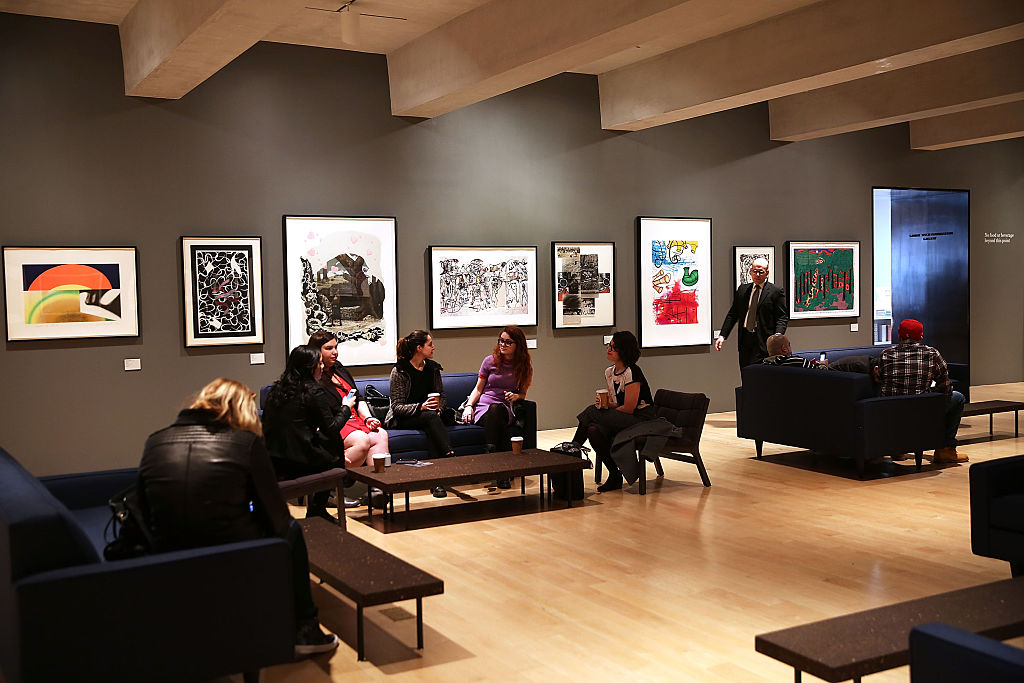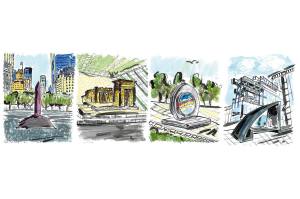In the spirit of the times, the Metropolitan Museum of Art in New York City is now unveiling an “Afrofuturist period room” that “transforms a 19th-century interior into a speculative future home” of historically oppressed blacks.
It’s quite a departure in museology. Entitled “Before Yesterday We Could Fly,” the gallery is expected to have long wait lines. The Bulletin, the Met’s highly regarded quarterly publication, will devote its February 2022 issue to the project and include a “graphic novella” that “animates the objects on display.” A co-ordinate Afrofuturist festival at Carnegie Hall promises that “epiphanies will abound in this experiential saga through the realm of Astro-Blackness.”
The Met exhibition’s title, according to the museum overview, comes from children’s book author Virginia Hamilton’s “legendary retellings” of the Flying African tale. “Activated through vision, sound, and storytelling, and furnished with a kaleidoscope of works from The Met’s collection—from Bamileke beadwork and 19th-century American ceramics to contemporary art and design,” it “foregrounds generations of African diasporic creativity.”
Afrofuturism’s fullest realization is 2018’s super-hit movie Black Panther and its vision of Wakanda, a fictionalized kingdom and home of superhero Black Panther from Marvel Comics. The idea has flourished since then to become a hot cultural property. Black Panther Forever comes to the screen in July 2022, destined to be a cinematic blockbuster. Afrofuturism blends old-fashioned négritude and science fiction. It “values humanity, the Earth and the universe at large,” says Ytasha Womack on behalf of Carnegie Hall. “There’s something about seeing oneself as part of a larger continuum and a universe that is empowering.”
“Before Yesterday We Could Fly” comes from nowhere and no time. It is a curiosity and totem, not really a period room. Other period rooms in the museum recreate and illustrate a historical design: the Ottoman salon from Damascus, Gubbio studiolo, and Adam dining room, for example. These interiors speak for themselves, as does their verisimilitude. They are not confections of electronics and now-art, Bamileke beadwork, and 19th-century American ceramics with a weepy, semi-fictional backstory of historical injustice, and a message as obvious as a medieval morality play.
Met gallery 508, previously devoted to eighteenth-century Italian decorative arts, was a natural to house the new tableau. Goodbye rococo — and good riddance! The high-traffic visitor intersection between big-draw Arms and Armor and the Egyptian Collection adjoins no existing period room, but display of worthy artifacts in context is not the purpose. This “period room” intends to provide a racial learning moment for a maximum number of museumgoers.
Curators Sarah E. Lawrence and Ian Alteveer are the main players in the venture. Contending all period rooms are fabrications of a fixed moment in time and past, they hope to unsettle the concept. Turning from preservation to politics, supported by vocal intramural factions, raiders of the lost museum are abandoning their trust, abusing their artifacts, and failing in connoisseurship to pander to current vogue.
Lawrence calls the Afrofuturist room an “exciting opportunity to push the boundaries of what a period room can be.” Yes, and apparently without the slightest worry about historicism or authenticity. Associate curator of modern and contemporary art Ian Alteveer agrees. The ensemble is “perfectly suited to Afrofuturism’s visionary collapsing of past, present, and future.”
Lawrence, recently arrived at the museum, is chief curator of European sculpture and decorative arts. Educated at Swarthmore and Columbia in both Renaissance art and critical theory, Lawrence professes “every period room is predicated on the fiction of authenticity.” She is making the familiar point that they are re-creations and to a degree inventions. Having found a crack in the wall, Lawrence goes whole-hog for anti-historical fantasy, abandoning curatorial duties in her Disneyland of social justice.
One can only speculate at the tortured “conversations” and plottings that led up to gallery 508’s overhaul. In 2020, the two curators put together a team of artists, curators, filmmakers, and scholars, and then asked the entire Met staff to respond to the project. They hired Hannah Beachler, who received an Academy Award for designing Black Panther, as lead curator and designer. “This project is important to me because it is a necessary conversation with time, loss, community, and hope,” says Beachler.
Met director Max Hollein, appointed in 2018 amid major institutional distress, concurs. “The Afrofuturist Period Room offers an important opportunity to start new dialogues and illuminate stories that are yet to be told within our walls,” he adds, “constructed space of now and tomorrow rather than a filtered perspective on the past.” Hollein and his associates radiate indifference to the patrimony inside what is arguably the world’s greatest fine-arts museum, preferring Met Gala-style spectacle and flashy stunts instead.
The Met has been a troubled place for at least a decade, and its intrigues are the stuff of legend. It no longer runs like former director Philippe de Montebello’s gold watch. Montebello retired in 2008, and since then museum finances, planning and connoisseurship have suffered. Managing the 2,300 prima donnas on the staff is like herding cats, and its interface with contemporary media has been uneven. As in almost every art museum, activism and anti-European prejudices have taken a toll.
“The inclusive nature of Afrofuturism, and other kinds of non-European futurisms, creates a kind of open-source aesthetic,” says the Art Newspaper. That’s one way to look at it. Another is to see “Before Yesterday We Could Fly” as a leading example of the reckless shift from preservation to political messaging in art museums nationwide.

















